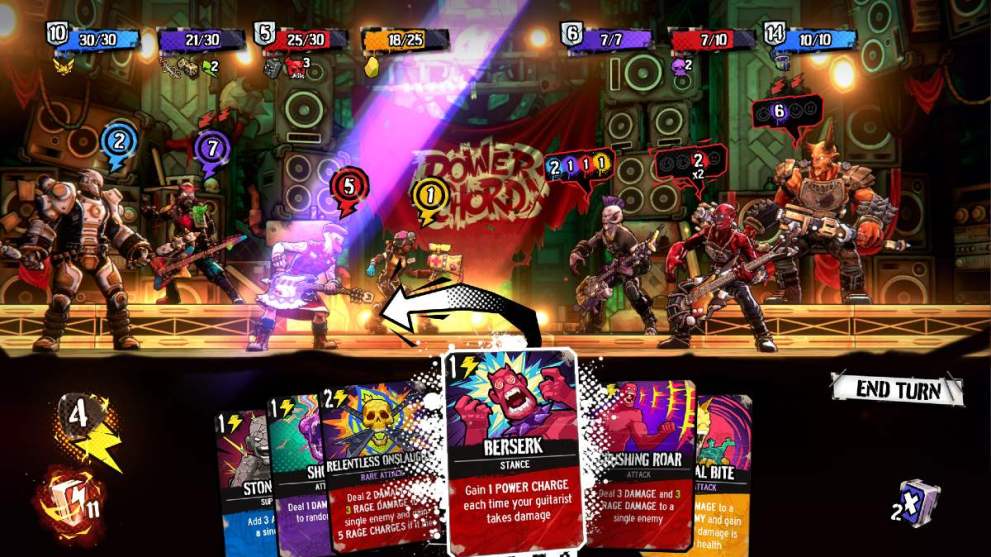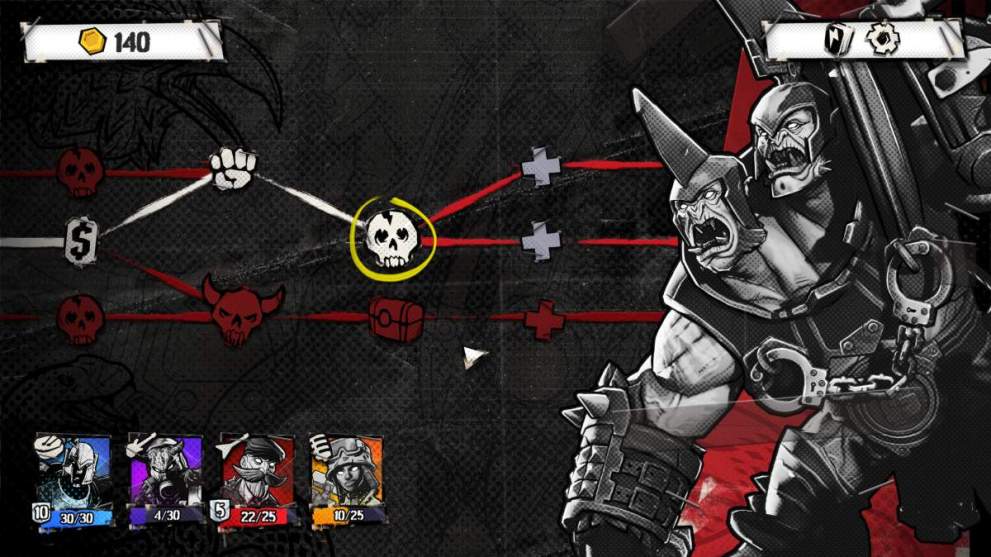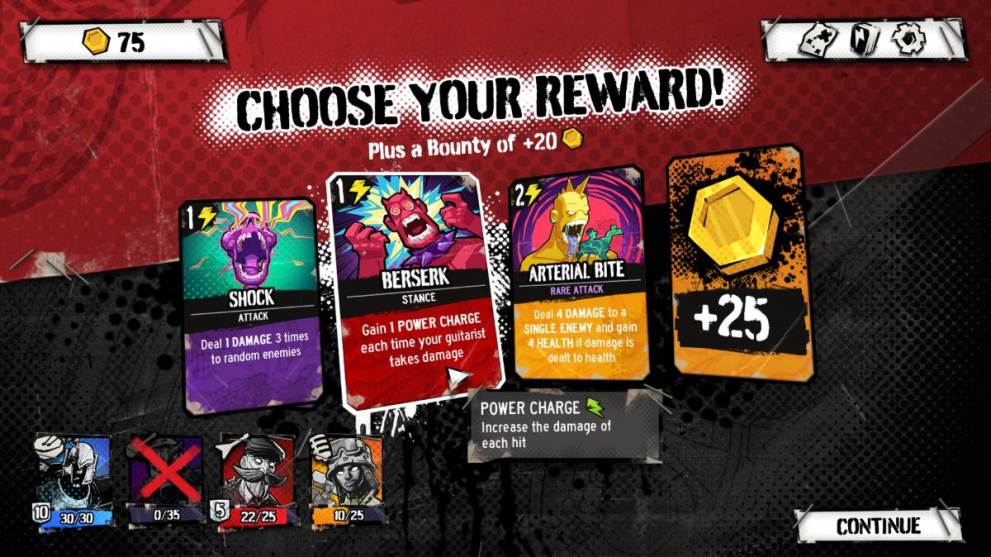When I first played Power Chord at PAX East, I was pretty intrigued by the premise. The game is inspired by acclaimed roguelike deck-building titles like Slay the Spire and Monster Train and takes place in a world where Earth’s mightiest musicians must fight off hordes of metal undead using the power of rock.
Right off the bat, I was drawn in, as the visuals made me feel like I was fighting the Devil with Tenacious D. The gameplay also feels pretty comfortable, as it uses the same structure as most of the other titles in the genre.
Unfortunately, I didn’t get to play a lot of Power Chord when I first got my hands on it, as there was only so much time and so much game to play. As such, I left feeling like there was more to experience when it comes to the mechanics.
After playing the preview demo for a couple of hours, I can safely say that Power Chord is going to be a chart-topper for roguelike deck-building fans. Just like the PAX East demo, the preview build for the game starts you off right at the beginning of a brand new run.

The team consists of the usual suspects that make up most rock bands: a singer, bass, drummer, and guitarist. Each one of these characters has class specialties and skill sets. The singer is support, the bass is magic that buffs and debuffs, the drummer is armor and defense, and the guitarist is all about damage.
While it takes a bit to understand how these characters complement one another, it isn’t long before the music starts to flow. To execute each member’s musical magic, players must draw and play cards, with each one representing a different possible attack, defense, buff, or debuff mechanic that plays a vital role in helping your team survive.
Six cards are drawn from your deck at the start of each turn, with each one featuring clear instructions as to what they do, how much they cost to use, and what member uses them. Each round, players can only use cards equal to the amount of lightning power they have on the side. As such, there’s a lot of strategy that goes into picking which cards to play.
Do you want to go all out on the attack? Then you’d better make sure you’ve got enough power to take out your opposition, or they’ll attack your wide-open characters when it is their move.
Think the best offense is a good defense? While that might be the case in some situations, you’ve got to deal damage if you want to beat the demons of Hellmoth and make it to the after-party.
The band isn’t the only one with special powers, though, as the enemy demons of Hellmouth also contain plenty of variety. Instead of just being opponents that have different armor and attack stats, Power Chord has you face demons that have their own special skills, too.
Even though one demon doesn’t have great health stats, they are deadly when it comes to inflicting long-lasting debuffs that will do damage long after they’ve been defeated on the battlefield. Small details and distinctions like this add another fine layer of thought that has to come into play with each run when playing Power Chord.

The nice part about Power Chord is that it does have a pretty gentle difficulty slope. In the two or so hours that I played, only one of my characters ever bit the dust, and that was when I was facing the final boss of the build.
Now, that isn’t to say that the game is a piece of cake. It’s just that the reward and pathing system is structured really well in the beginning to help players feel comfortable with the game. Instead of just throwing difficult confrontation after difficult confrontation at you to start, Power Chord throws in enough rest, treasure, and shop spots to make things feel fair.
Resting is obviously important, as it lets you either bring back a bandmate from the dead, heal the entire team a fair amount, or heal a specific character fully. Treasures and shops is where the true strategy of Power Chord comes into play.
At each one of these locations, you’ll either be given items or have the opportunity to buy items with the money you’ve earned while battling on each run. Each character can be equipped with five of these items, which do everything from giving their attacks more damage to raising their defense.
It might sound simple, but picking the right items to equip for the right character results in some pretty deadly and awesome stacks. It’s also important to note that items can’t be removed once assigned, so there’s another element of strategy and planning that has to go into place with each assignment.

Alongside these items, these locations grant you the opportunity to buy more cards that will improve your deck. Be wary, though, as not only do these cards get reset after each run, but adding more cards to your deck makes it so that you have more cards to draw. This may sound like a good thing, but sometimes less is more when you really want to draw a specific, quality card, but you can because your deck is overflowing.
With all that said, I really think Power Chord is going to surprise a lot of people when it releases on PC via Steam in Q3 2022. Its aesthetic is rocking, and the gameplay is fun yet unique enough that fans of the roguelike deck-building will keep begging for one more encore.
